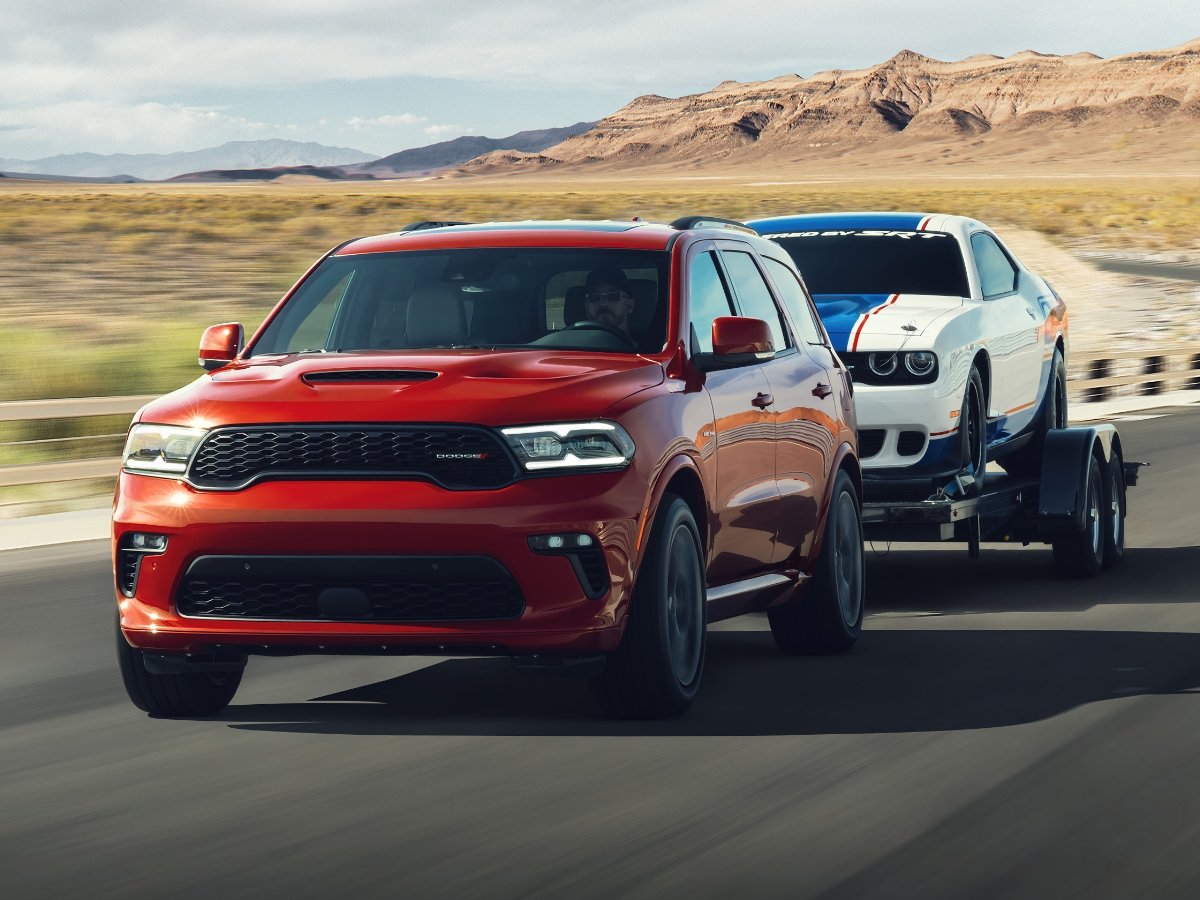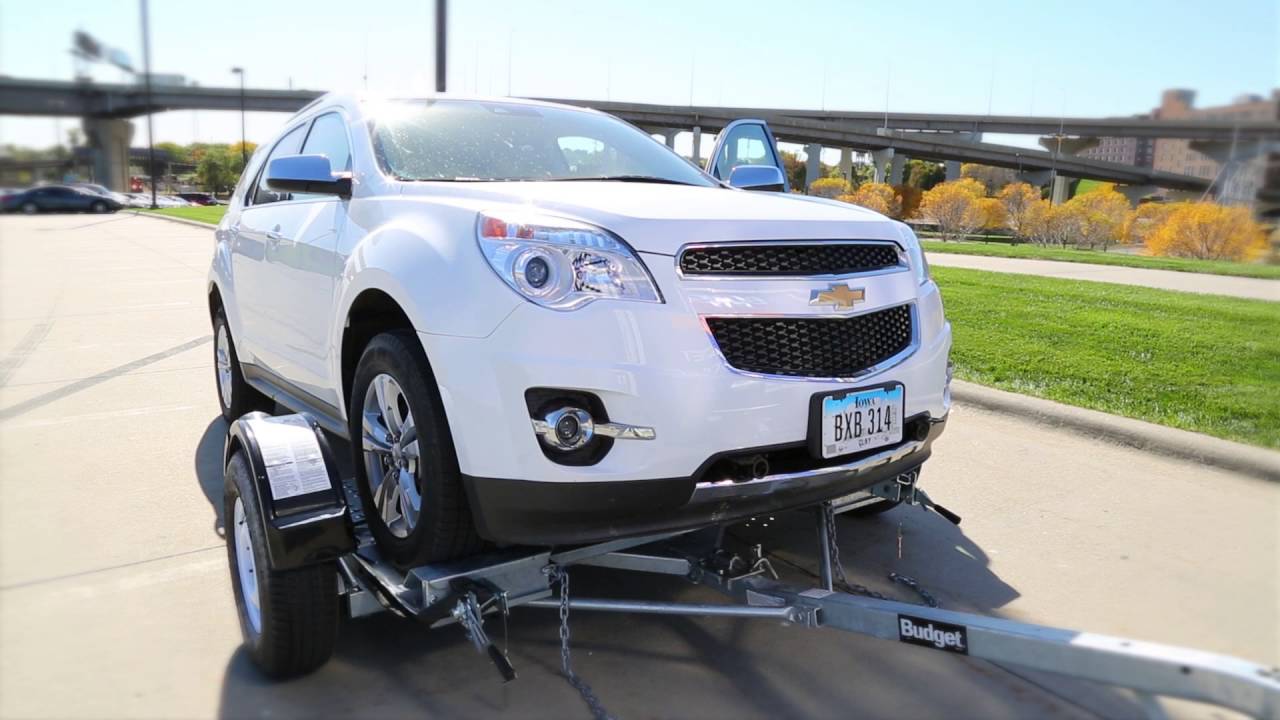Any expert and seasoned driver would agree that it’s far safer and easier to tow a car with a tow truck or pickup/trailer combo than with another car. However, you might not have access to these heavy equipment, either because you simply can’t afford a tow truck or you are in a remote location where it’s tough to get help, and thus will need to improvise. If you are wondering how to tow a car with another car, this article will give you the answers, plus important notes and safe driving tips when towing.
Contents
How to Tow a Car with Another Car: Do Your Homework First
Tow Vehicle And Towed Vehicle: Basic Facts

To determine if you can safely tow another vehicle with your car, you’ll need to do some homework first. First and foremost, you must check the owner’s manual for both the tow vehicle and the one that’s being towed to make sure both of them can handle the job without sustaining damages.
Towing a vehicle improperly can damage the driveline of the towed vehicle and void its warranty. You should avoid this at all costs, since replacing driveline parts can be extremely expensive. Do not underestimate this fact-finding step.
Major driveline repairs, like bearing or gear replacement can cost between $1,000 to $3,000 dollars. As for minor replacement, driveshaft prices can vary wildly, depending on your vehicle model, which shaft you need replaced, and whether it’s a single or two-piece driveshaft. Front driveshafts are typically between $150 and $250; the larger rear shafts cost much more, between $250 and $400, and more for a two-piece. Add in the cost of the labor, which is between $150 and $190.
In addition, you’ll need to know the tow rating of your vehicle and if your vehicle has a tow hitch installed. If in doubt, consult your owner’s manual.
Below are a few guidelines are worth reviewing before we dive into the details of how to tow a car with another car:
- The tow vehicle must be larger and heavier than the car being towed, as the tow vehicle should have more engine and braking power to both initiate and stop two cars instead of one.
- Turn on the ignition in the car being towed so the steering wheel doesn’t lock.
- If you are driving at night, switch on the towed vehicle’s parking lights so that vehicles following behind can see it.
- Make sure there is no passenger or pets in the car being towed, as it is extremely dangerous and also illegal. They should always ride in the tow vehicle.
Tow Vehicle: Hitch
No matter what towing method you choose, your tow vehicle must have a tow hitch attached to the chassis. Many trucks and SUVs come equipped with a tow hitch from the factory, but most passenger cars do not. The good news is tow hitches are easy to install. But if you have never done it yourself, you can either consult the many video tutorials available online or have a professional do the work.
Towed Vehicle: 2WD vs. 4WD
You’ll also need to know if the car you are towing has 2-wheel drive or 4-wheel drive, and if it has an automatic or manual transmission. And, if the towed vehicle has 2WD, you need to know if it’s front-wheel drive or rear-wheel drive.
If the vehicle being towed is FWD, the best option is to use a tow dolly as this will minimize wear and tear on the driveline components of the towed vehicle.
If the towed vehicle is RWD, you will want to disengage the driveshaft, either manually or via a switch, if equipped. Then, for automatic transmission, you’ll need to unlock the drive axle. Otherwise, for manual transmission cars, you’ll need to put the towed vehicle in neutral and release the parking brake. Refer to the owner’s manual for instructions on how to do these as they might not be extremely straightforward.
How to Tow a Car with Another Car: 4 Methods
Using a Tow Dolly

A popular option for how to tow a car with another car is to use a tow dolly, which is essentially a small trailer. Tow dollies are lightweight and widely available. You can rent one at many moving and storage facilities.
The benefit of this method is that the dolly keeps the towed vehicle’s front tires up off the ground, which helps reduce driveline wear and also tire wear on the towed vehicle.
In addition, thanks to the towed vehicle’s front tires being kept off the ground, a tow dolly eliminates the common problem when braking, that is “pushing” of the towed vehicle. This happens when the towed vehicle’s momentum pushes the back end of the towing car to the outside of the turn.
Using a Trailer
The best and safest option for towing a car with another car is using a car hauling trailer, either open or enclosed, though this might not be the most sought-after approach due to the higher costs. With a hauling trailer, all four wheels of the towed vehicle sit on the trailer, so there is no wear and tear to the tires and drivetrain of the towed vehicle.
All you need to do is to drive the car up onto the trailer and firmly secure it with straps and/or chains. Note that you’ll need to use a truck as your tow vehicle for this method. This is because the combined weight of the towed vehicle and the hauling trailer will exceed the tow rating of any passenger car as well as many SUVs today.
Using a Tow Bar
Another popular approach to the question of how to tow a car with another car is to use a tow bar, which is widely available for rent in case you don’t already have one. Typically, tow bars have an A-frame design and mount to the towed vehicle. The tow bar attaches to the tow vehicle via the rear-mounted hitch.
When using a tow bar, you’ll also need safety chains. Also, note that tow bars are the most prone to pushing, that is when the towed vehicle’s momentum pushes the back end of the tow vehicle to the outside of the turn. Therefore, use extra caution when simultaneously braking and turning while towing with a tow bar.
Last Resort: Using A Rope or Chain
Repeat: this should only be your last resort and only do this when you only need to travel a very short distance. Using a strap or chain for car-to-car towing on freeways is actually illegal in some states, as this poses certain risks to the driver and others on the road.
Car-to-car towing using a tow rope or chain should only be done for very short distances at low speeds on easily maneuverable local roads; highways are a big no no. If towing by this method, you must never exceed 20 mph.
Braking should be done very slowly with extreme caution as the towed vehicle will likely be in neutral and have no active brakes and can slam into the tow vehicle, potentially causing damage to both cars. Turning when towing with a rope or chain is tricky too, as the towed vehicle will also push the tow vehicle at turns.
If you opt for this method, at least make sure you’re using proper ropes or chains. Thin, frayed ropes and rusty or cracked chains that may be lying around can easily snap under the stresses of towing and result in accidents. Also, ensure the rope or chain isn’t too short or long, as this can also cause handling and braking problems.
READ MORE
- How To Get Your Car Towed: What You Need To Know
- Best Small SUV For Towing: Top-Rated Plus Affordable
- The Cheapest Way To Tow A Car
Towing a Car with Another Car: Safe Driving Rules
When towing a car with another car, the safety rules are similar to those for driving a semi-truck:
Drive slower and Go easy on the brakes
The extra weight of the vehicle being towed means longer braking distances, so you need to leave extra room between your car and the one ahead and drive more slowly than you normally would.
Longer braking distances means you must brake early and with extra caution. Avoid sudden braking or panic stops. Ensure your brake rotors and pads are in good condition.
Avoid sharp turns
You should avoid sharp turns when using any towing method, but especially when using a tow bar or A-frame tow bar. As a tow bar connects the two vehicles quite closely, sharp turns may result in the rear of the tow vehicle impacting the front of the towed car behind, causing damage to both.
Changing lanes and mirrors
You might have come across many semi-trailers with a statement on the back: “If you can’t see my mirror, I can’t see you”. Towing a car with another car creates wider blind spots, so you must exercise extreme caution when changing lanes. After you’ve activated your turn signal and checked your mirrors carefully, slowly change lanes when it is safe to do so.
Not just when changing lanes, you must be fully aware of your surroundings at all times. Ensure your mirrors are correctly mounted and secure, clean, not cracked, and adjusted to the driver. If you tow often, you can get tow mirrors for longer towed trailers.


